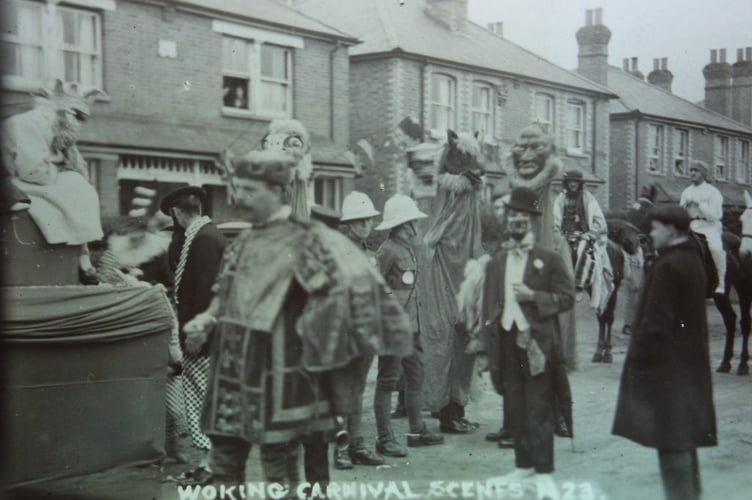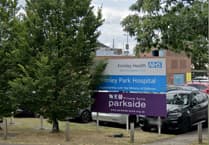WOKING went carnival crazy in June 1923 with a week of events raising money for an extension to its Victoria Cottage Hospital.
These included fetes, three balls held at the Grand Theatre, a rifle match, prize competitions that included a car and a brand new house (the latter previously featured on the Peeps page), and three carnival processions.
In its edition of 15 June 1923, the News & Mail reported the events in great detail. It noted: “Stirred by the example of Guildford and Farnham, Woking has courageously tackled its hospital problem, and though its effort may not realise the full financial results achieved in these sister towns, there’s no doubt that the enterprise has been a magnificent success and abundantly worthwhile.”
This was, of course, a time before the introduction of the National Health Service in 1948, and therefore hospitals had to raise money the best they could. In the post-First World War years hospital fundraising grew and carnivals became a popular way of doing so.
Woking was aiming to raise in excess of £3,000 to help offset a balance of £6,000 to complete a £20,000 extension to its cottage hospital that had opened in 1899, originally costing £4,200. These are minute amounts to the sums needed to fund the UK’s health system today!
Woking achieved its target and the News & Mail reported that the carnival’s organisers thought £2,500 “would have been a satisfactory result”. They must have been delighted as the cash did indeed pour in, £800 alone coming from street collections, and a healthy £500 raised at the Woodham Hall Fete.
The people of Woking certainly dug deep in their pockets and gave generously – the entertainment laid on for them must have done the trick. This can be gleaned from the News & Mail’s report that included: “Perhaps the outstanding events in the week of revelry were the Queen’s tour on Monday, the magnificent procession on Wednesday, and the grand climax on Saturday.

“The carnival roused the town as it has never before been roused, and on Saturday when the residents might pardonably have been expected to show signs of weakness, the carnival spirit asserted itself to a more pronounced degree than ever, bringing the event to a fitting conclusion in a strenuous round of whole-hearted fun. Everyone seemed disappointed when midnight brought the revelry to an end.”
The aforementioned Queen’s tour, one of the processions, was headed by the carnival queen. She was Mrs J. Hutchinson Driver. The News & Mail praised her, saying: “Universally it has been acknowledged that the town could not have chosen a better sovereign leader, for Mrs Driver has given her important role a graciousness, distinction, dignity and cheerfulness, which has won her esteem and admiration throughout the district.
“Every carnival function has been graced by her presence and Woking will long cherish happy memories of its queen of the past week.”
For most of the carnival week the weather stayed fine, and that must have helped to bring out the crowds, but there was some rain on the Friday. On that day the carnival queen was due to “lay some bricks at the new carnival house in the Kingsway, but the event had perforce to be postposed”.
As featured here last August, the house under construction in Kingsway was the carnival’s major raffle prize. The house had cost £632 to build, and the land cost £50 to purchase. £76 had been donated towards the construction by local builders. Profit on the raffle was £472. It was won by George Langford, a goldsmith, silversmith and jeweller, who had a shop at 5 Chertsey Road.
The News & Mail did publish several photographs of the carnival in its report and some pictures were issued as picture postcards. Although they are scarce today, reader Mark Coxhead has recently added two of them his collection. He has also helped be locating the newspaper’s report on microfilm at the Surrey History Centre.
There will be more details of the carnival in the next edition of peeps.
If you have some memories or old pictures relating to the Woking area, call me, David Rose, on 01483 838960, or drop a line to the News & Mail.
David Rose is a local historian and writer who specialises in what he calls “the history within living memory” of people, places and events in the west Surrey area covering towns such as Woking and Guildford. He collects old photos and memorabilia relating to the area and the subject, and regularly gives illustrated local history talks to groups and societies. For enquiries and bookings please phone or email him at: [email protected]

.png?width=209&height=140&crop=209:145,smart&quality=75)


